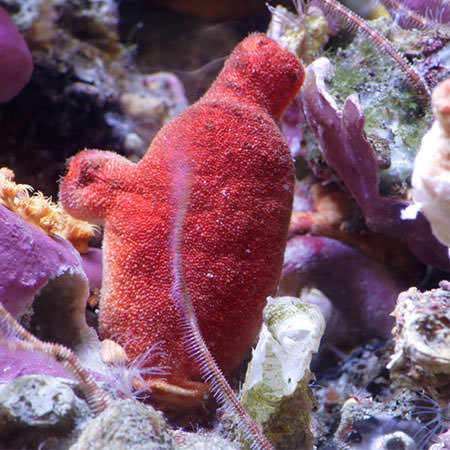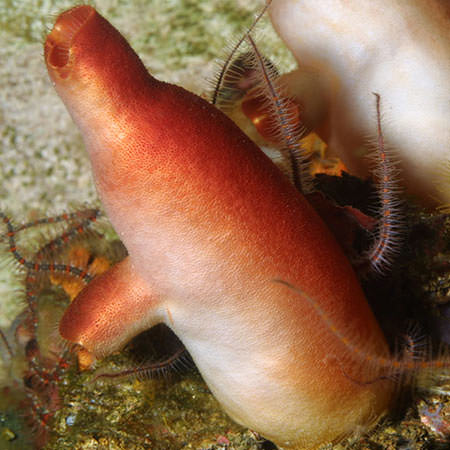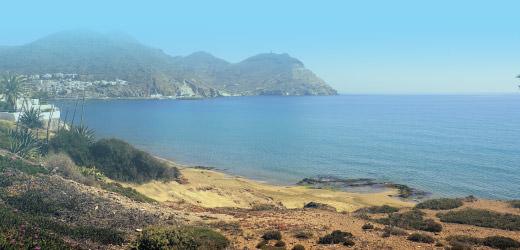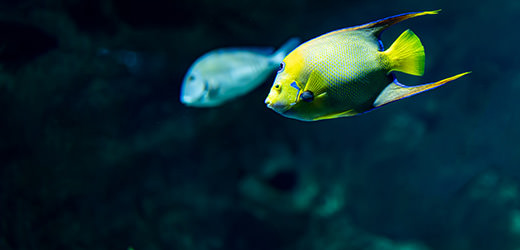Natural environment
The red sea squirt lives between 10 and 100 m in depth. It stays away from light and prefers places that are protected from the sun’s rays, like caves and rocky overhangs.
Alimentation
This animal looks something like a hot water bottle clinging to a rock. It feeds by straining water to retrieve plant and animal micro-organisms as well as organic debris. It has two siphons that do this: one in the upper part, through which it takes in water, and the other on the side, to breathe it out. Each animal has a ring of bristles that it uses to close its orifice whenever it is disturbed, and to prevent the intrusion of inedible particles.




